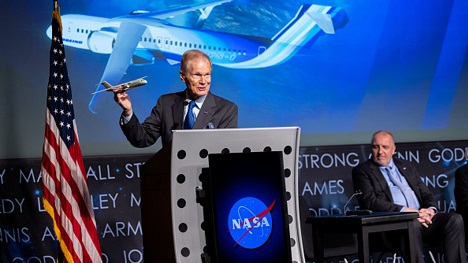The Boeing Company has received funding from NASA for the Sustainable Flight Demonstrator project, which aims to educate future eco-friendly single-aisle aircraft. NASA announced on Wednesday.
Boeing and NASA will collaborate on the development, testing, and flight of a full-scale demonstrator aircraft as well as the validation of emission-reduction technology under a Funded Space Act Agreement.
Over seven years, NASA will invest $425 million, with the remaining cash, or around $725 million, coming from the corporation and its partners. The agency will also provide facilities and technical knowledge as part of the arrangement.
“NASA has always been there for you when you fly. To go further, faster, and higher, NASA dared. And by doing so, NASA has improved the dependability and sustainability of aviation. Our DNA has it, according to NASA Administrator Bill Nelson. We hope that NASA’s collaboration with Boeing to build and test a full-scale demonstrator will contribute to the development of future commercial aircraft that are more fuel-efficient, benefiting the environment, the commercial aviation sector, and travelers all over the world. If we are successful, the public might be flying in planes with these technologies in the 2030s.
As the workhorse of many airline fleets, single-aisle aircraft are responsible for close to half of all aviation emissions in the world. NASA expects the project’s testing to be finished by the late 2020s, allowing the industry to use the technology and designs it has revealed to make judgments regarding the next generation of single-aisle aircraft, which might go into service in the 2030s.
Boeing and its industry team will collaborate with NASA on the Sustainable Flight Demonstrator project to create and test a full-scale Transonic Truss-Braced Wing demonstrator aircraft.
An aircraft with extra-long, thin wings stabilized by diagonal struts is the focus of the transonic truss-braced wing concept. This design produces an airplane that is significantly more fuel efficient than a conventional airliner since it has a shape that would reduce drag and cause it to use less fuel.
According to Bob Pearce, NASA’s associate administrator for the Aeronautics Research Mission Directorate, “NASA is working toward an ambitious goal of developing game-changing technologies to reduce aviation energy use and emissions over the coming decades toward an aviation community goal of net-zero carbon emissions by 2050.” The Transonic Truss-Braced Wing is the type of game-changing idea and investment we will need to solve those problems, and crucially, the technologies demonstrated in this project have a clear and practical path to inspiring the next generation of single-aisle aircraft, benefiting everyone who utilizes the aviation system.
Depending on the mission, NASA expects the technology used on the demonstrator aircraft to result in fuel and emissions savings of up to 30% when compared to today’s most effective single-aisle aircraft. This reduction will depend on other developments in propulsion systems, materials, and system architecture.
NASA has jointly developed cutting-edge sustainable aviation designs, such as the Transonic Truss-Braced Wing concept, with Boeing and other industry partners.
According to Todd Citron, Boeing’s chief technology officer, “We’re delighted to continue our cooperation with NASA and to demonstrate technology that greatly enhances aerodynamic efficiency resulting in substantially lower fuel burn and emissions.” To assist the U.S. Aviation Climate Action Plan and achieve the industry goal of net zero carbon emissions by 2050, Boeing has been pushing a multifaceted sustainability strategy that includes fleet renewal, operational efficiency, renewable energy, and innovative technology. The Sustainable Flight Demonstrator relies on almost a decade of investments made by NASA, Boeing, and our industry partners to support the achievement of these goals.
Boeing and its partners have presented a suggested technical plan as part of the new Funded Space Act deal, which enables NASA to benefit from the expertise and understanding of the private sector. Access to NASA’s aeronautics resources and expertise will be made available. No aircraft or other equipment will be purchased by NASA for its missions. Access to specific ground and flight data that can be utilized to verify the airframe configuration and related technologies will be granted to the agency.












